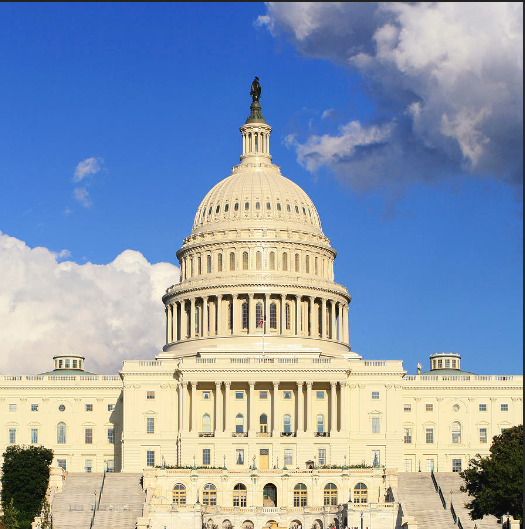It’s Time to Expand and Reform the Prison-Based Workforce Development System

A jail-based American Job Center, part of the Linking to Employment Activities Pre-Release (LEAP) program.
Sergio Galeano
Policy Advisor – Economic Program, Third Way
If we are to view the prison system as an instrument of justice and a deterrent from criminal activity, it should be the case that a prisoner’s punishment for committing a crime should end when they are released, and not last for the rest of their lives. Yet across countless metrics, justice-involved individuals are often relegated to the bottom of the socioeconomic ladder. This contributes to poor economic mobility, high levels of unemployment, and viciously high rates of recidivism.
Inequity is rampant across this population. Black and Hispanic Americans make up 12.6% and 18% of the national population, respectively, but 38.2% and 30.4% of the prison population. Looking at education rates, 25% of incarcerated adults don’t have a high school degree or GED, compared to 13% of the US population.
To address this, policymakers should implement a suite of holistic reforms that create opportunities for justice-involved individuals to reintegrate into their communities, gain equitable access to employment and education, and improve their economic outcomes.
Problems With Prison-Based Workforce Policy
Job and educational training are among the many solutions to increase employment prospects. Evidence shows that incarcerated individuals who participated in vocational and educational training were more than 30% more likely to be employed and 40% less likely to be rearrested within the first year of being released. A gold standard among these opportunities are apprenticeships that provide participants with useful, transferable skills across a number of existing and emerging industries.
President Biden has championed this learn-and-earn model and committed to creating 1-2 million new apprenticeships across existing and emerging industries over the next decade. Within this effort, expanding and improving the prison-based apprenticeship model offers a strong avenue towards improving economic outcomes for returning citizens. Of the more than 1.8 million incarcerated individuals, however, only 8,100 worked in registered apprenticeships in 2021, out of the 221,000 apprenticeships across the country.
Not only is the apprenticeship- and prison-based workforce development system underutilized, it’s also underperforming due to various financial and programmatic difficulties. Among the most prominent is a lack of training opportunities in high-demand occupations. Three-quarters of prison-based workers are employed in roles necessary for prison maintenance, such as cooks, plumbers, housekeeping, and landscaping. The vast majority occupy what would be low-paying jobs outside of prison.
Inmates who successfully enroll in an apprenticeship occupation, especially in maintenance-related jobs, are often held back by work fluctuations; they lose valuable education and training during periods in which their services are simply not needed.
Prison transfers can also be counterproductive to workforce and educational efforts. At best, a transfer can mean a temporary, yet still harmful disruption to their programs; at worst, if a newly assigned site does not offer equivalent programming, it can altogether put a stop to an inmate’s coursework. In addition, a lack of relationship-building between employers and prisons further reduces training opportunities. While many established and pilot reentry programs are currently being implemented, they are not up to par with what a fully-fledged prison-based workforce system could look like.
Then there are the financial obstacles. The prison system costs the United States billions of dollars a year, and it relies heavily on funds from the Workforce Innovation and Opportunity Act (WIOA) for educational, and job training programs. Sadly, inflation-adjusted WIOA funding has decreased by more than 40% over the past two decades. Budgets also vary by state, often leaving prison-related programs competing with other essential community-based programs for scarce dollars. The main recipients of WIOA funds– state, and local workforce boards– consistently cite inadequate funding as the main obstacle towards meeting their performance metrics.
We can do better.
Working Towards Solutions
These programmatic and financial challenges significantly curtail the workforce system’s capacity to provide inmates with adequate job training and supportive services. Without strong pathways into employment, inmates enter the job market severely underprepared, handicapped by long gaps in their work histories, scant professional contacts, and the stigma associated with past incarceration.
Despite evidence that correctional and workforce agencies can successfully collaborate to provide returning citizens with impactful job and post-release services, these features have not been made a permanent fixture of the criminal justice system.
And no single solution exists to dramatically improve the system on its own – an expansive set of solutions is required. Here are five.
One promising solution exists in the National Apprenticeship Act. Passed by the House of Representatives last year, it would support the expansion of the registered apprenticeship model, including the expansion of apprenticeship and pre-apprenticeship programs across the criminal justice system. This legislation should be ratified and implemented.
A second critical measure would be a general increase in WIOA funding. Passed in 2014, WIOA is currently up for reauthorization, providing the federal government with an opportunity it must seize to reinfuse the American workforce with higher levels of federal investment. By extension, this would provide increased funding for correctional job training and reentry programs.
The current draft of the Workforce Innovation and Opportunity Act of 2022 from the House Education and Labor Committee would codify the Department of Labor’s Reentry Employment Opportunities grants. If enacted, these grants would provide consistent funding streams to help prison-based programs pursue more career training initiatives, increase engagement with employers, and provide supportive services.
Third, Congress should establish a network of prison-based American Job Centers (AJCs). There are more than 3,000 AJCs across the country providing valuable job training and career counseling for more than 20 million Americans a year. While such programs exist to some degree across the nation’s correctional facilities, they are not up to par with the kinds of services that non-incarcerated citizens have access to.
There’s evidence from numerous initiatives that a network of prison-based AJCs would achieve strong results. One such program is the Linking to Employment Activities Pre-Release (LEAP) program. Launched in 2015, it established a network of jail-based AJCs that aimed to streamline cooperation between workforce boards, employers, and corrections agencies with the goal of increasing inmates’ employment readiness. The outcome was greater employment, reduced recidivism, increased earnings, and better opportunities for educational and credential attainment. Additional examples that could serve as models for prison-based employment services can be found within the Bureau of Prisons’ Ready to Work initiative, which seeks to increase connections between employers and recently released workers.
A fourth proposed solution involves using congressional funding for apprenticeships to pay inmates for their work. The vast majority of prison work is not paid at all or paid drastically below prevailing wage levels. This makes life a lot harder for prisoners. Many have families they would otherwise be supporting financially, and incur onerous legal costs during and after incarceration. There is a legal precedent for paying incarcerated apprentices. The Prison Industry Enhancement Certification Program (PIECP), for example, is a joint venture between employers and prisons active in over 44 correctional jurisdictions which pays inmates wages commensurate with the federal minimum to perform jobs that teach skills and increase employability. For eligible prisoners, such as non-violent offenders in good standing, it offers a forward-thinking solution that should reshape how policymakers and the public think about criminal justice and community reintegration.
Fifth, Congress should create workforce intermediary agencies to help modernize and streamline the apprenticeship system across states. As Third Way has noted, intermediaries would actively engage stakeholders across the workforce pipeline, including employers, unions, educational institutions, and community partners. As part of their scope of work, intermediary agencies could help bolster prison-based apprenticeships and skills programs, giving them a level of organizational support that could dramatically improve the criminal justice system’s capacity to serve returning citizens.
***
The American justice system features a complex, dynamic, and sometimes imperfect expanse of laws, rules, and norms. Ultimately, the same ethics that should guide the manner in which we try, convict, and imprison law offenders should also inform our approach to how we treat returning citizens.
The history of the US incarceration system– and its scope– has created innumerable ripple effects across American society. One such consequence has been a weaker and less equitable workforce. Without strong, established pathways into the labor force, justice-involved individuals exit the prison system severely underprepared, thoroughly handicapped by the sentence they’ve already completed.
Though just one of many much-needed prison reforms, a strong prison-based workforce system would consequentially increase economic mobility for the millions of justice-involved citizens across the country. Reform and expansion would provide justice-involved individuals with a fairer second chance and inclusive opportunities for obtaining a good job, attaining a rewarding career, and getting ahead in life.
***
This blog was adapted from Third Way’s 2021 report, “Bolstering the Prison-Based Apprenticeship and Workforce Training System.”
Sergio Galeano is an economic policy advisor at Third Way, a center-left think tank based in Washington, DC. Follow him on Twitter:
@SergioAGaleano


National Association of Workforce Boards | All Rights Reserved |
Created by Olive + Ash.
Managed by Olive Street Design.









